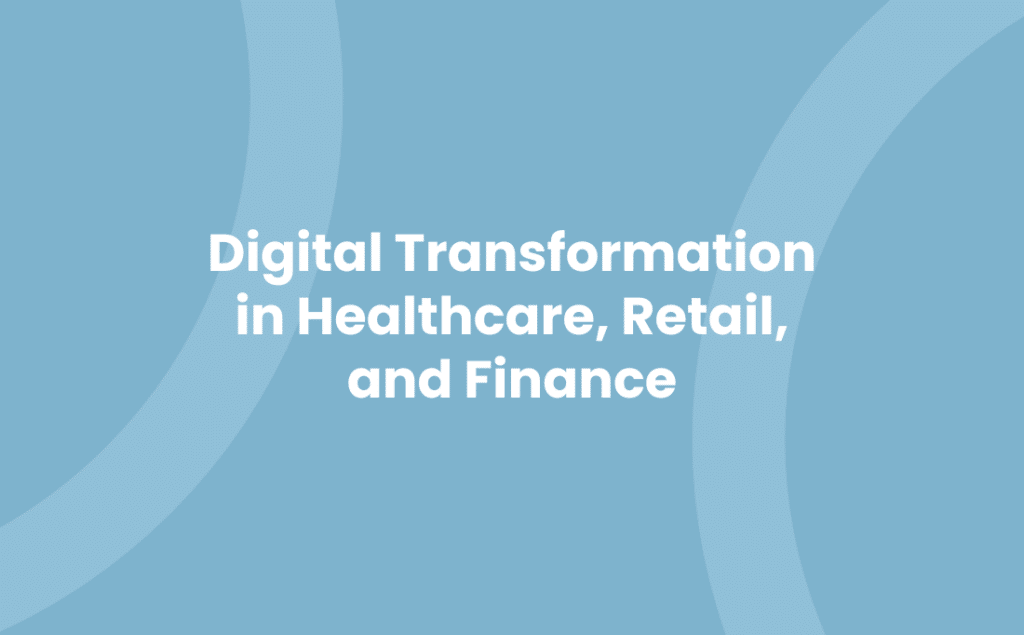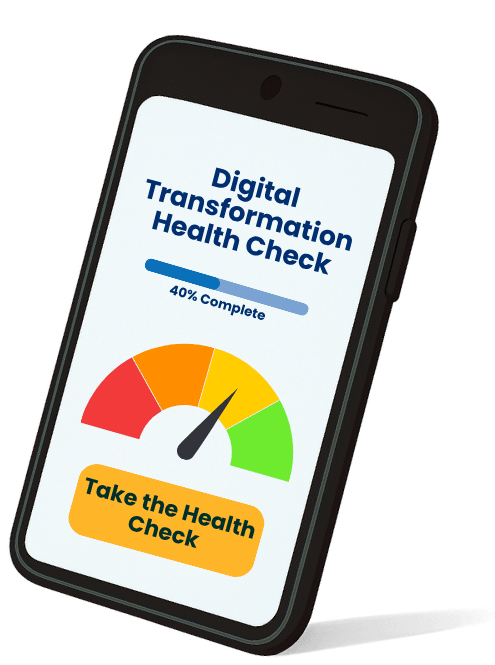Imagine a world where technology is seamlessly integrated into every aspect of our life. This isn’t a far-off dream, it’s the reality of digital transformation. It’s revolutionising industries, from healthcare to retail, and altering the way we conduct business.
But what does digital transformation truly mean for specific industries? How is it shaping their future and driving innovation? In this article, we’ll delve into these questions, exploring the impact and benefits of digital transformation in various sectors.
So, if you’re curious about how technology is changing the face of industries, or you’re a business leader looking to harness the power of digital transformation, you’re in the right place. Let’s embark on this digital journey together.
The Concept of Digital Transformation
In the digital age, transformation isn’t an option, it’s a critical business strategy. Made manifest by a radical rethink of how an organisation uses technology, people, and processes to change its operating model, digital transformation goes beyond traditional roles like sales, marketing, and customer service. A case in point, digital transformation in finance, where the industry has seen a seismic shift in processes. This is digital transformation for you, it changes not only how you work but redefines the way you visualise success.
Consider the process of digital transformation as a digital re-tooling. It offers your business the leverage to adapt to shifting market conditions and capitalise on new opportunities. For example, traditional industry sectors have introduced cutting edge technology solutions to revamp their operational paradigms. As a result, you are offered enhanced user experience, consistent quality, and improved operational efficiency.
By investing in digital transformation, your business falls in line with the demands of the current digital economy, striving to transcend the constrains of dated legacy systems and obsolete business processes. This process taps into the potential of advanced technologies and analytics to provide comprehensive insights into customer behaviour and market trends.
Notably, digital transformation encourages innovation and facilitates the adoption of modern work practices. Consequently, as a key player in unlocking opportunities, you’re offered more avenues for expansion and growth. It also reinforces individual roles within an organisation as agents of change, ensuring they’re integral in shaping future direction and outcomes.
Let’s delve deeper, using the industry’s digital transformation as a practical instance. The infusion of technology in the industry has expressed itself as a dynamic shift towards data-driven decision-making and streamlined operations. It’s been a catalyst in reshaping the industry’s landscape, paving the way for improved service delivery and innovative business models.
Ultimately, digital transformation primes your business for the future. Reinventing traditional ways of working, it presents an open canvas for reshaping strategies, redesigning operations, and redefining products and services. After all, in a world constantly on the cusp of change, seizing opportunities has everything to do with revolutionising business from the inside out. This is what digital transformation, implemented effectively, can offer you.
Digital Transformation in the Manufacturing Industry
Digital transformation significantly influences the Manufacturing Industry by augmenting traditional processes and igniting new growth opportunities. Here’s a breakdown of the effects and implications this modern transition brings to the forefront in manufacturing:
- Automation and Process Enhancement: Modern technology enhances manufacturing operations by streamlining entire production lines. For instance, the automation of routine tasks reduces manual labour, elevates efficiency and mitigates errors.
- Data-Driven Decisions: Advanced technology aids in capturing and deciphering large volumes of data, aiding smart decision-making. These insights help manufacturers fine-tune processes, control costs and improve overall product quality.
- Customer Experience Reinvented: Digital transformation facilitates better customer engagement by offering dynamic and interactive platforms. It enables manufacturers to anticipate customer needs accurately, providing the products and services their clients demand, exactly when they need them.
- A Done Deal with Digital Twin Technology: Digital Twins are becoming a manufacturing staple. These replicas allow manufacturers to simulate product performance, identify potential weaknesses and anticipate maintenance requirements‚ resulting in increased reliability, efficiency and lifespan of machinery.
- Supply chain optimisation: Applying digital technologies like Internet of Things (IoT), Artificial Intelligence (AI) and blockchain can enhance supply chain visibility, accuracy and traceability to ensure smooth functioning and market responsiveness.
Digital Transformation in the Healthcare Industry
Digital transformation presents significant opportunities in various sectors and the healthcare industry sits high on this list. Greater adoption of technology profoundly influences health organisations. It delivers enhanced patient care, optimises routine procedures, and facilitates data-driven decision-making.
Let’s take Electronic Health Records (EHRs) as an example. They’ve revolutionised the way information is stored and accessed in healthcare. Health practitioners no longer rummage through piles of paper to find critical patient information. Instead, with a few mouse clicks, they can access a patient’s complete medical history, from previous diagnoses and treatments to ongoing medication details and allergy information.
Telemedicine tends to be another byproduct of digital transformation within healthcare. It’s turned time-tight consults into urgent care video calls, making healthcare more accessible and efficient. You can consult a health professional from the comfort of home, saving on travel time and reducing the risk of spreading contagious diseases.
Digital transformation in healthcare doesn’t stop there. Machine Learning (ML) and Artificial Intelligence (AI) applications aid in analysing massive data sets, offering predictive analytics, and enhancing diagnostics precision. For instance, AI-powered software can analyse radiology images, pinpoint anomalies and suggest potential treatment paths. It’s not about replacing doctors but providing tools that draw quicker, more accurate conclusions.
Moreover, healthcare systems benefit immensely from digital transformation for operational tasks – streamlining the appointment scheduling process, improving communication across different departments, and refining supply chain management. It’s all about minimising human errors, increasing efficiency, and improving overall patient experiences.
In essence, digital transformation catalyses significant improvements in all areas of the healthcare industry. It optimises existing processes while opening doors to untapped potential. This progression inevitably leads to better patient care quality, improved health outcomes, and a robust healthcare system equipped to tackle the future.
Digital Transformation in the Retail Industry
Reimagining your retail venture with digital transformation places the power directly in the hands of your customers. The adoption of advanced technology reshapes the retail industry by revamping operating models and enhancing user experiences.
Digital technologies, such as cloud computing, artificial intelligence (AI), Big Data analytics, and IoT, accelerate operational efficacy and boost sales. For instance, major supermarket chains in the UK leverage Big Data analytics to gain insights into consumer shopping habits. AI algorithms use these insights to predict purchasing patterns, enabling the provision of personalised discount offers and shopping recommendations.
Similarly, IoT technology aids in inventory management with smart shelves that monitor stock levels in real time, alerting you of shortages and preventing out-of-stock scenarios. Moreover, the advent of mobile shopping apps integrated with AR technology provides consumers with a rich, interactive shopping experience. These apps simulate in-store experiences, flagging the end of long queues and crowded stores.
Quick-response (QR) codes have found a new lease of life with the pandemic. The need for touchless transactions has led to the rise of contactless payments, revolutionising the checkout process. QR code-based payments minimise physical interaction while enhancing transaction speed and convenience.
Yet, digital transformation isn’t solely about adopting new technology. It’s an organisational change that involves a cultural shift, a willingness to challenge traditional ways, embrace change, learn from failure, and persistently pursue improvement and innovation. It’s creating customer-centric approaches that prioritise their preferences and values.
In a nutshell, the primary goal of digital transformation in the retail industry revolves around enhancing the customer experience. It efficaciously integrates online and offline retail environments for a seamless shopping experience, thereby increasing brand loyalty and customer retention.
To keep pace with this digital race, it’s crucial that you continually engage with your customers, employees, suppliers, and stakeholders. It’s about harnessing the correct technology to drive your business towards a customer-focused digital future. Explore new retail horizons, invest wisely in technology, and behold the transformative power of digital innovation.
The Challenges Faced in Digital Transformation
Fascinating as it sounds, digital transformation poses distinct challenges to industries across different sectors. In the healthcare field, initial adoption of Electronic Health Records (EHRs) and AI applications, heralds a new era, but concerns about data privacy and the technical proficiency of users linger. Cybersecurity in an increasingly connected environment serves as a hard hurdle to cross, while users grapple with handling confidential patient data, despite encryption.
For the retail industry, while AI, Big Data analytics and IoT promise profits, they carry risks. The adoption of these transformative technologies brings with it questions about the safety of online payments, waning physical shop experiences and the risk of workplace redundancy due to automation. Shoppers’ tastes evolve swiftly; keeping pace with this while ensuring a seamless online-offline retailing environment can pose quite the challenge.
The digital transformation in finance too harbours pitfalls. On the one side, it presents the opportunity to explore innovative and efficient ways of operations. But on the flip side, it demands industry-level compliance to regulations, managing investment risks and addressing potential threats to operational security. Moreover, getting the employees to embrace change, be it in operational process or in workplace dynamics, proves a daunting feat.
Meaningful digital transformation thus goes beyond technological adoption in isolation. It calls for a strategic approach, incorporating user education, stakeholder engagement, and investment in secure, practical technology. It isn’t a mere shift, but a journey fraught with obstacles. Careful planning can, however, make this journey rewarding and successful in the longer term.
Key Players Promoting Digital Transformation
Digital transformation, a trend unfolding across industries, finds patronage from influential companies. As they actively champion digital technologies, these key players play instrumental roles in defining industry standards.
Let’s start with Microsoft, a heavyweight in the landscape of digital transformation. Known for introducing innovative products like Azure, Microsoft’s cloud infrastructure, Microsoft aids industries in migrating conventional data storage to the cloud. Hospitals utilising Azure health cloud‚ for example‚ improve patient data access and management, driving digital transformation in healthcare.
Our next player is Apple, a titan in consumer electronics. With the integration of AI and IoT in its products, Apple propels changes in user behaviour and expectations‚ one key aspect of digital transformation. Imagine a retailer employing location-based services on an iPhone to send personalised offers, redefining the retail customer experience.
Being a pioneer in e-commerce, Amazon too boasts a prominent place in driving digital transformations. Through AWS, its cloud platform, Amazon enables affordable data management and scalability for businesses. Think of a small finance firm leveraging AWS to process large data volumes, driving digital transformation in finance.
Lastly, it’s IBM, a company leading the way with advancements in cognitive computing. IBM’s Watson, an AI platform, navigates large data sets to provide insights, contributing significantly to transforming industrial processes. An example includes pharmaceutical companies employing Watson to expedite drug research and development.
These key players, with their technological prowess and willingness to break traditional limits, essentially steer the journey of digital transformations across industries. You, as leaders in your industry, can harness these technologies to initiate a digital revolution. You aren’t just improving your operational efficiency or user experience‚ you’re rewriting industry rules and setting new standards. Embrace the change, mark your contribution.
Conclusion
Digital transformation is not just a trend; it’s a driving force reshaping industries like healthcare, retail, and finance. It’s about leveraging technologies such as EHRs, AI, Big Data analytics, and IoT to enhance operational efficiency and user experience. Despite the challenges, industry leaders like Microsoft, Apple, Amazon, and IBM are setting new standards, pushing the boundaries of what’s possible with technology. They’re showing us how embracing digital transformation can revolutionise industries. So, it’s time for you to step up, embrace these advancements, and take your industry by storm. After all, the future of your industry is digital, and it’s happening now.



